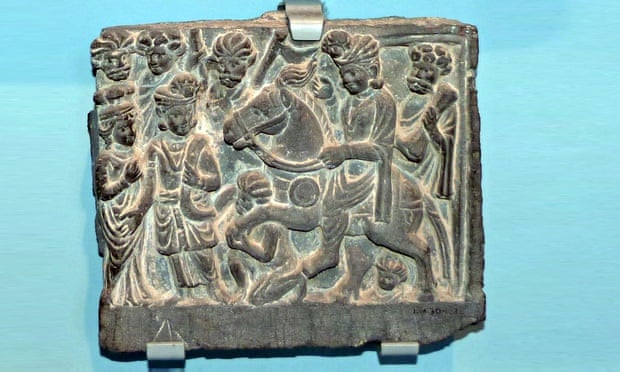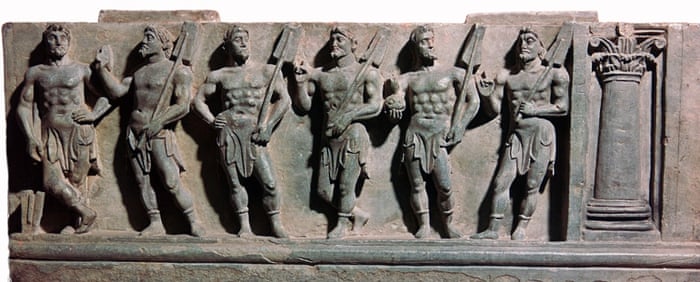Two thousand years ago, Buddhist not Christian art was our guiding light – and had all the best nativity scenes

A crowd of people gather round a man on a horse, in an ancient stone relief that roars with life. Is this Christ entering Jerusalem? Or even a nativity scene – a wise man heading for Bethlehem perhaps?
In fact, it is an image of Prince Siddhartha setting out from his father’s palace. This masterpiece of Buddhist art was carved in Gandhara, on the borders of modern Pakistan and Afghanistan, some time between the second and fourth centuries AD. But like many other artworks from ancient Gandhara, it uncannily resembles early Christian art. Indeed, it is evidence of a fascinating encounter of east and west.
This is a time of year when we pay a lot of attention to Christian art, if only because nativity scenes look so, well, Christmassy. So here’s an unusual Christmas fact: 2,000 years ago, Buddhism led the way in religious art. It set out the power of sacred imagery and showed how art can deepen piety. Christianity soon took up the same idea of art as a religious powerhouse. But why do early Christian images, such as ivory nativity scenes, look so similar to the art of Gandhara ?
It is because both traditions were influenced by ancient Greece and Rome. The conquests of Alexander the Great led to a Hellenistic kingdom in Afghanistan. Later, the Roman Empire traded with merchants travelling the Silk Road towards China. Gandhara was open to the influence of classical civilisation, and this is dramatically visible in its art.

Works from ancient Gandhara in the V&A and the British Museum in London include reinterpretations of Greek myth, classically posed statues and imported bronzes. There is no doubting these Greek and Roman echoes in the Buddhist art of Gandhara. One portrait of a Buddhist monk in the V&A looks just like a Roman senator.
There was no contradiction between Buddhism and Greek philosophy. In fact, the ideals of Plato had a lot in common with the Buddhist search for enlightenment. Contact over hundreds of years had deepened such similarities.
Christianity, too, fed on classical art for its images. The style of Roman sarcophagi was adopted for Biblical scenes. Yet Christian art took centuries to find its true power. Buddhism was the first great religion to use art to win souls. It drew on classical sources to create something new, moving and profoundly beautiful. The greatest triumphs of Gandhara-style classicism were the colossal Buddhas at Bamiyan, made in the sixth century and destroyed by the Taliban in 2001.
But the deepest connection between Buddhist and Christian art is that they both tell stories. Gandharan reliefs tell stories from the life of the Buddha in pictures. The V&A, for instance, owns a work from Gandhara that depicts the birth of the Buddha. How’s that for a nativity?
In the season when Christian art gets looked at more than any other time, it is worth remembering that it is just part of a global continuum of religious art. Buddhism paved the way for the nativity scenes circulated at this time of year and, I believe, ultimately inspired them.
No comments:
Post a Comment